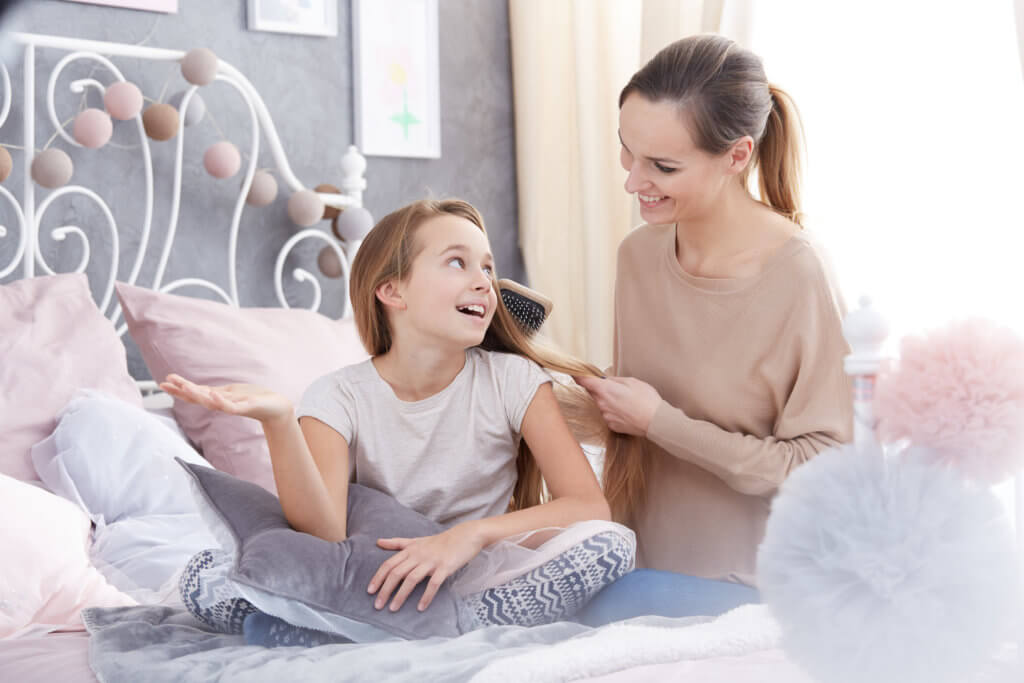September has arrived, which means the leaves are changing colors, the weather is getting cooler, and you and your family are transitioning back into busy school schedules. September is also National Head Lice Prevention Month, making now the perfect time to remind you how to handle head lice if there is an outbreak at your child’s school or daycare.
What are head lice?
Head lice are parasites that only affect humans. As the name suggests, they live on people’s heads and feed on their blood. They can’t fly or jump, but they crawl fast and breed quickly, so it’s important to take action very soon after you discover them. Head lice can cause the scalp to itch or become uncomfortable, and pediculosis—an infestation of lice—is considered an infectious disease.
What are nits?
“Nits” is the common term for lice eggs. They can vary in color, but they often appear translucent or white-ish. They are very small and sometimes hard to spot, due to the fact that female lice typically lay their nits near a person’s scalp. Additionally, nits are attached firmly to individual hairs—literally, glued—and can’t be removed easily. Nits are laid at an angle on each hair, making them oval-shaped and uniform, which helps identify them against other hair deposits that could be confused with nits (such as DEC plugs or hair casts). Nits are often more common than lice themselves and hatch quickly, which means removing them early is very important.
How does someone get head lice?
Anyone, regardless of age, personal hygiene, or social status, can get head lice. Because head lice can’t fly or jump, they have to be transferred directly from another host. They are commonly spread through head-to-head contact, but sharing hats, brushes, pillows, headrests, and even headphones is also highly disadvised.
How to prevent head lice:
The best way to prevent the spread of head lice is to check your child’s head weekly, or daily in the case of an outbreak. Watch for frequent head scratching and look for nits. Do not attempt to treat for head lice if there is no evidence of them on your child, because this will not work to prevent them in the future. Additionally, lice-killing products are pesticides, and they can be harmful to you, your child, and your family even if they are used correctly.

What to do if you find head lice or nits:
If you find head lice on your child, be sure to notify your child’s school, camp, or child care provider as soon as possible. Also, be sure to tell the parents of your child’s friends, so everyone can be aware of the outbreak and work together to prevent the spread of lice. Ask your child’s primary care doctor before using lice treatment products, and definitely consult a professional if lice or nits are found in your child’s eyebrows or eyelashes.
How to treat head lice:
Manually removing head lice and nits with a lice comb is the safest, most thorough way to get rid of lice. This method is efficient, inexpensive, and protects you and your child from chemical lice treatments. Section off your child’s hair, then use the comb through each section until you cover every inch of their head. Use a cup of water or a paper towel to remove lice or nits from the comb between strokes. Repeat this manual process every day until you are sure the infestation is gone. Continue to check all family members for lice and nits to prevent further spreading of the parasite, and boil the lice comb before using it on another person. Additionally, use hot water and a hot dryer setting to wash bedding and clothing. When cleaning upholstery, carpets, car seats, or stuffed animals, use a vacuum—not lice spray. Finally, use this opportunity to stay calm and educate your child or family about head lice.
For additional information about head lice, visit headlice.org.
Do you have more questions about raising healthy kids or are looking for a trusted pediatrician in Salem, Oregon? Contact our staff at WFMC Health or become a new patient today!